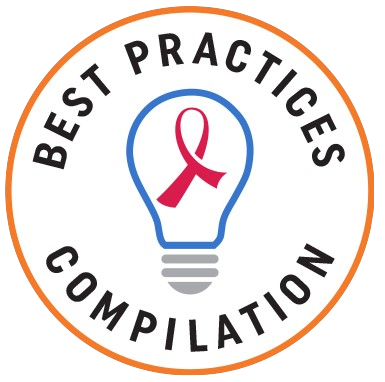The San Joaquin County Public Health Services Department partnered with the California Department of Public Health, Office of AIDS to help Ryan White HIV/AIDS Program (RWHAP) clients get to medical appointments through ridesharing. Representing the first partnership between a jurisdiction and a ridesharing company, this program addresses transportation barriers, promotes engagement in medical care, and leads to cost savings.
San Joaquin, CA
San Joaquin County is a large and rural county in California that faces higher poverty and unemployment rates and lower viral suppression rates than the state overall. San Joaquin County examined the barriers to care access, interviewed clients, and ultimately determined that transportation was a major obstacle to care because of poor public transportation and lack of private cars.
To qualify for ridesharing, San Joaquin County required clients to have a medical need or appointment scheduled in San Joaquin County and to be unable to obtain transportation themselves. In addition, to promote safety for clients and ridesharing drivers, the county expected clients to be able to walk from the vehicle unassisted, be 18 years of age or older (or accompanied by an adult), and have no serious behavioral concerns on file. Finally, San Joaquin County required that clients must not miss more than one ridesharing appointment or be traveling to their initial appointment to enroll in the RWHAP.
Case managers play a central role in coordinating rides. Clients request a ride or the case manager suggests the ridesharing option prior to scheduled medical appointments. The case manager then confirms eligibility and completes a request form, which is approved by a supervisor and transmitted to “dispatch” to arrange the pickup. The case manager then communicates the ride details to the client who is able to access the ride and communicate with the driver via the ridesharing phone app.
The client cannot deviate from the route or the planned destination. In addition, the case manager is notified when the client arrives at the destination. These steps ensure client engagement in medical care and appropriate use of program funds.
The ridesharing program has proven to be cost-effective by replacing more expensive client transportation options, such as taxis or rides provided by case managers. While the impact of the program on appointment attendance has not yet been rigorously evaluated, the program has received feedback from clients that the convenience of ridesharing helps them stay engaged in care.
| Category | Information |
|---|---|
| Evaluation data | The cost of 210 rides in the first six months of the program, which started in 2017. Program utilization |
| Measures | Average cost per ride and total monthly cost of transporting clients. Number of clients who participated in the ridesharing program between 2017 and 2019 by race/ethnicity, age, and gender. |
| Results | The ridesharing program has replaced taxis and freed staff time previously spent on client transport, resulting in an average savings per ride of $35 and a monthly savings of over $1,216. During the first two years of the program, 68 individuals participated, the majority of whom were under 100% of the federal poverty level (FPL) (83%) and people of color (74%). |
Source: Support Services Trifecta: Creative Utilization of Transportation, Housing and Food. National Ryan White Conference on HIV Care & Treatment 2020 presentation.
“Thanks to [the ridesharing program], I am able to attend all my medical appointments without worry.”
San Joaquin County:
- Contacted the corporate representative of the ridesharing company to establish the program. There was no pre-existing program in place and all details were developed in partnership.
- Worked with the ridesharing company's contracting department to ensure that invoicing for rides adhered to county accounting regulations.
- Developed a dashboard to summarize rides and costs to promote accountability, and track utilization and cost savings.
“[Under the previous program], the case manager not only has to take his or her time to drive the client places but there's also the cost of the county vehicle that they would use. Taxis were more expensive too, plus there was all the time and energy of somebody to set up those rides. And there was never really a good feedback loop unless the case manager took the client, obviously, to make sure that the client got where they were supposed to go.”
- This cost-effective program is being sustained by the continued funding relationship between the California Department of Public Health and San Joaquin County.
- Initially, ride wait times were long—up to four hours in some cases. San Joaquin County worked with the ridesharing company to adjust the algorithm to provide more drivers during peak times to ensure quicker pick-ups.
- The commitment of the ridesharing company and a strong county accounting team were crucial in developing an effective program that worked for both San Joaquin County and clients.
- San Joaquin County maintains the option for case managers to accompany clients to appointments in cases where the client wants case manager support during the appointment or prefers not to participate in ridesharing for privacy reasons. While HIV status is not disclosed, drivers are aware that San Joaquin County is paying for the ride, that clients cannot modify the route, and that clients are being taken to a medical facility.

